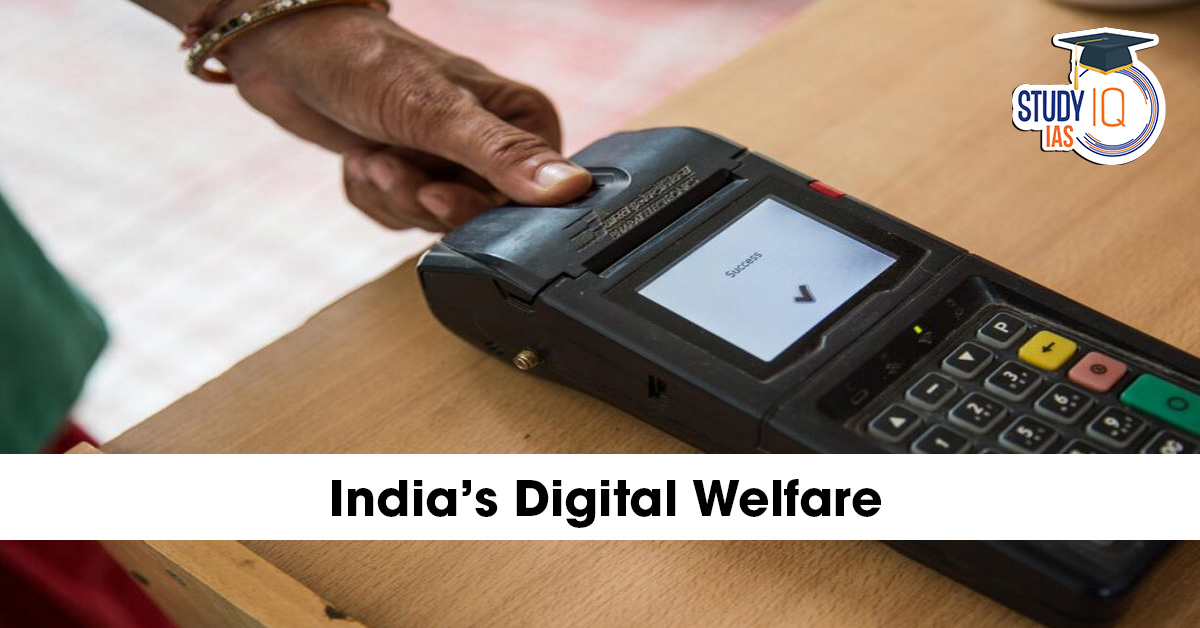Table of Contents
Context: India has made huge progress in using digital tools for welfare.
- But this push for efficiency may be reducing citizen participation and weakening accountability.
- Welfare delivery is becoming more technical and data-driven, but less democratic.
How Technology is Changing the Welfare State
The digital system follows a logic that is:
- One-way (top-down delivery)
- Streamlined and measurable (easy to monitor)
- Less tolerant of errors or complexity
India’s Digital Welfare: Key Challenges
- Technocratic Turn in Welfare Governance: Over 1 billion Aadhaar enrollments and 1206 schemes on DBT reflect India’s digital-first welfare model.
- The focus has shifted from “who needs help” to “how to deliver help efficiently” — this shift has made welfare less about rights and more about data and algorithms.
- Democracy Deficit: Schemes like e-SHRAM and PM-KISAN are examples of this.
- These programs deliver benefits efficiently but ignore people’s lived experiences or local needs.
- Citizens are no longer treated as rights-bearing individuals but as data entries or beneficiaries, who have no say in how the system works, as critiqued in Justice Chandrachud’s Aadhaar dissent.
- Welfare Spending and Transparency are Declining: Despite all the talk of a “welfare state,” India’s social spending has gone down, from an average of 21% (2014–2024) to 17% in 2024–25.
- Important welfare areas like minorities, labour, nutrition, and employment have been hit hard. Spending in these areas fell from 11% (before COVID-19) to just 3% now.
- At the same time, the Right to Information (RTI) system is in trouble. As of June 2024, there were over 4 lakh pending cases and 8 vacant positions in information commissions.
- This shows a lack of transparency and weakening citizen oversight.
- Rise of ‘Algorithmic Insulation’: The Centralised Public Grievance Redress and Monitoring System (CPGRAMS) tracks complaints well and resolves many cases. But it may be doing so without clear responsibility.
- While issues are being recorded and closed, it is unclear who is actually responsible for fixing them.
- This creates a situation where technology increases visibility but hides accountability
What Can Be Done?
- Make Digital Systems More Democratic: Build systems that don’t collapse under stress — embed human discretion, context-sensitivity, and local feedback loops.
- This is called democratic antifragility — a system that improves under stress by learning and adapting.
- Empower Local Governments: States and villages must have more freedom to design programs that work for their people. Programs like Kudumbashree in Kerala are good examples.
- Bring Back Citizen Voice: Empower Gram Sabhas, frontline workers, and local feedback to play a bigger role. Citizens must be able to question decisions and demand better services.
Protect Rights in Digital Systems
There must be clear rules for:
- Offline support when digital systems fail
- Bias checks
- Appeal and explanation rights — so people can challenge wrong decisions
- The UN Special Rapporteur on Poverty has also recommended regular audits involving communities to ensure fairness.
Conclusion: Focus on the Citizen
- Digital tools can help deliver welfare faster and cleanly. But if we forget the human side of governance, the system may become efficient but unfair.
- A truly developed (Viksit) India must not treat people as just data points. Citizens must be partners in governance, not just passive beneficiaries.
- Let’s build a system that is smart, fair, and democratic — one that listens to people, not just machines.


 Advanced Air Defence Radars: Types, Comp...
Advanced Air Defence Radars: Types, Comp...
 Ion Chromatography, Working and Applicat...
Ion Chromatography, Working and Applicat...
 Broadly Neutralising Antibodies (bNAbs):...
Broadly Neutralising Antibodies (bNAbs):...

























